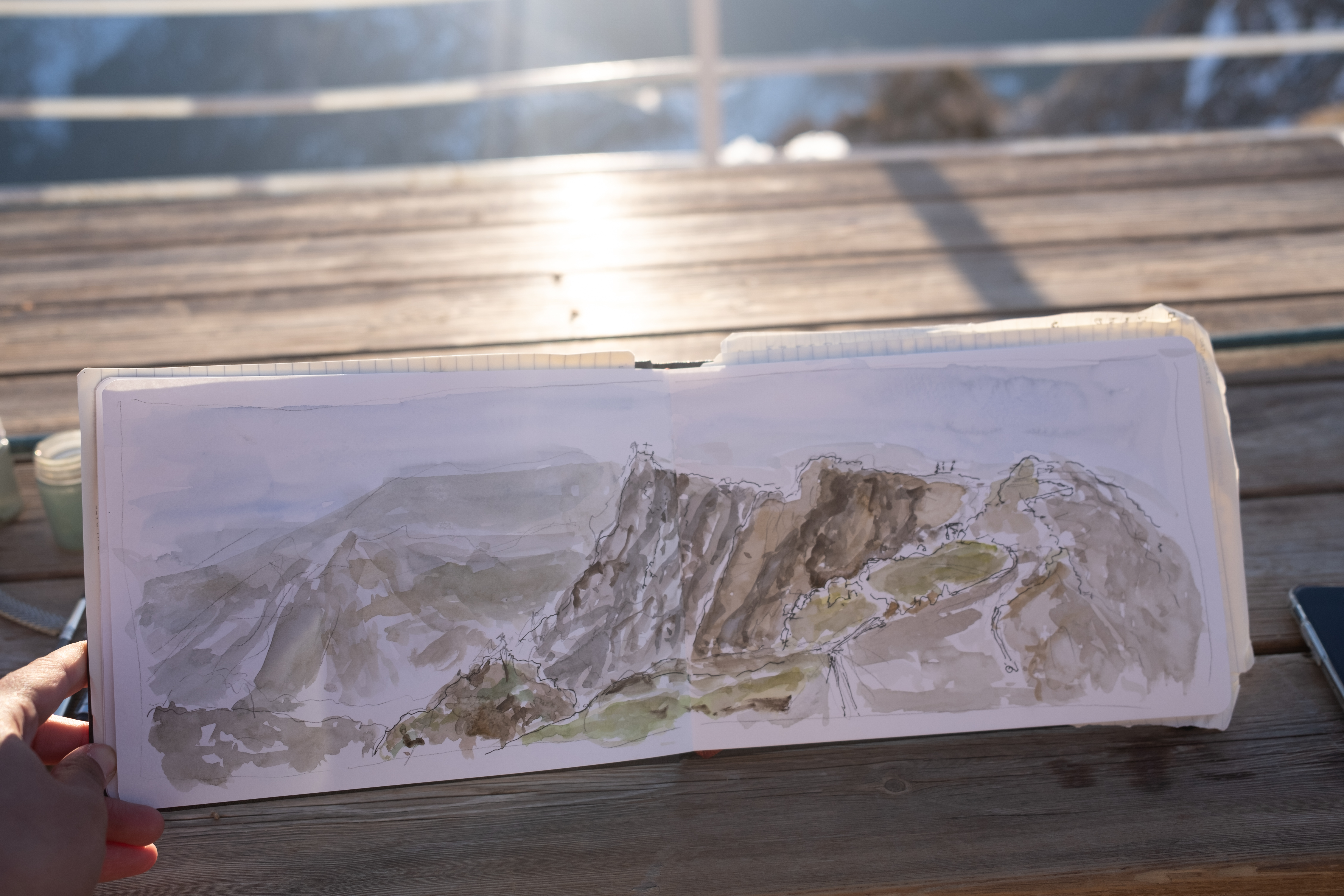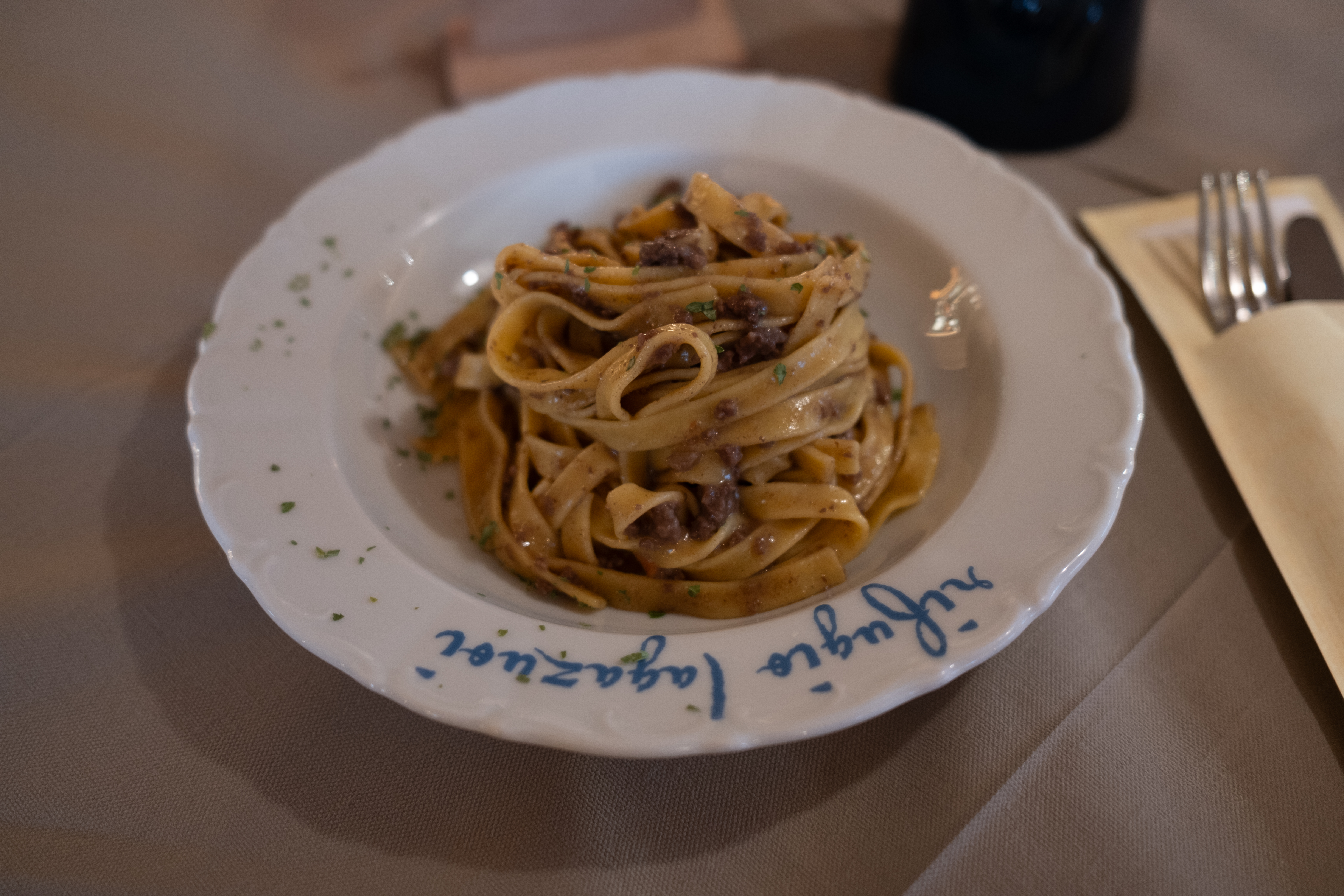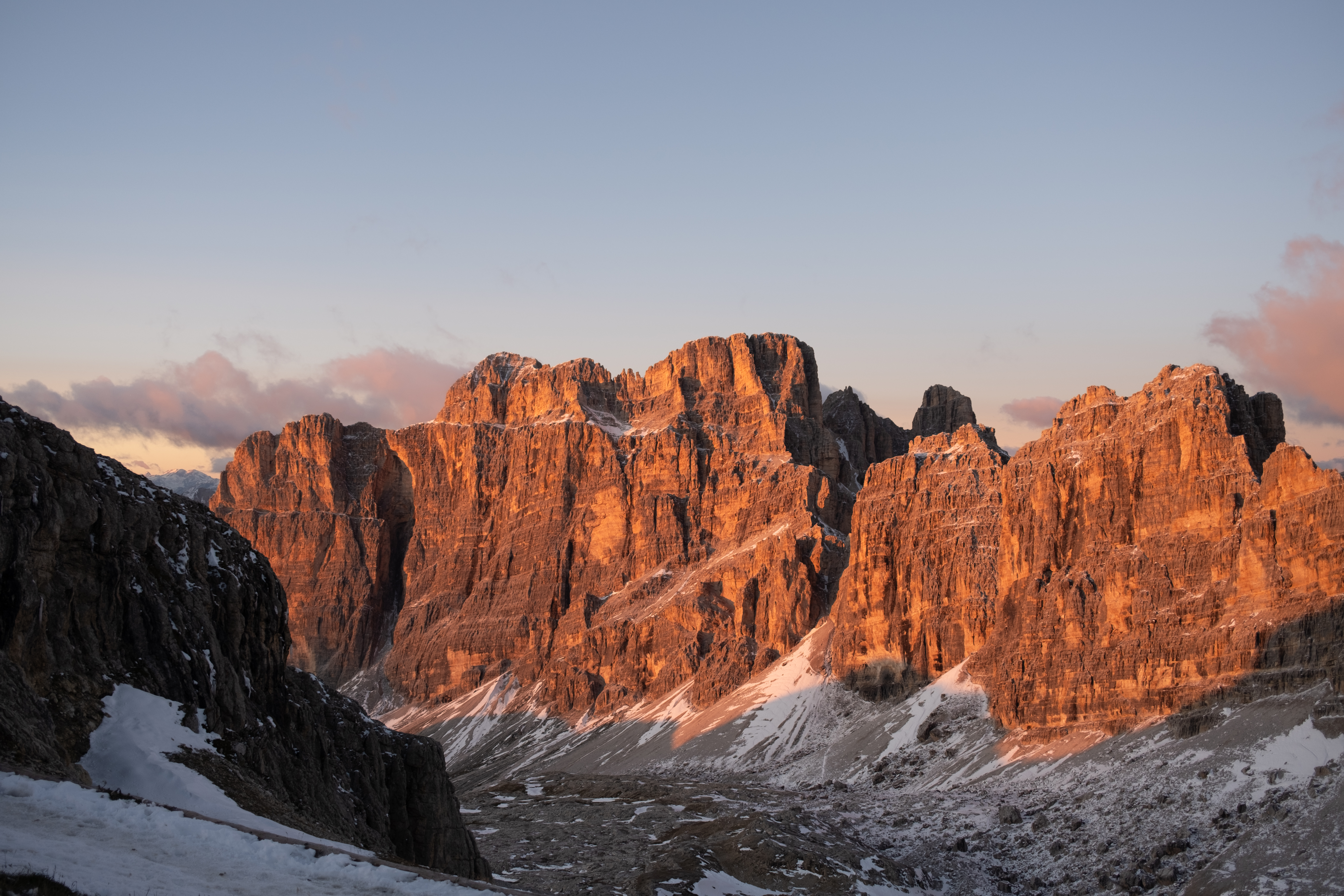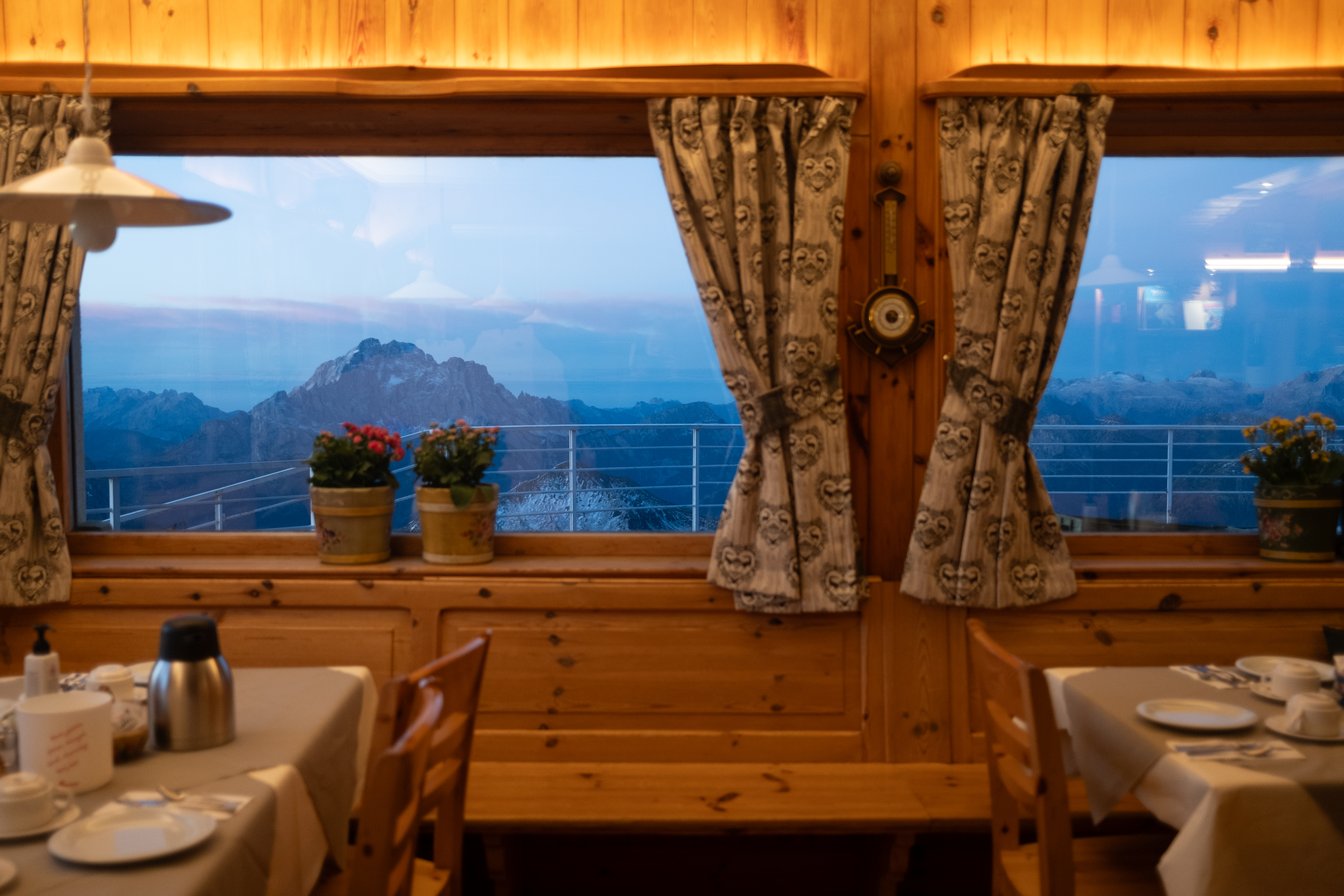At breakfast, I made a fantastic discovery that it turns out you can send postcards from Rifugio Fanes. They have a cute little postal box on their own, tucked away in the corner of the dining room. I discovered this just when I was about to leave, but of course I’m not going to pass up the chance to send myself a postcard from the Dolomites. So that’s what I did, and afterward I headed out to the intersection where the four of us agreed to meet.
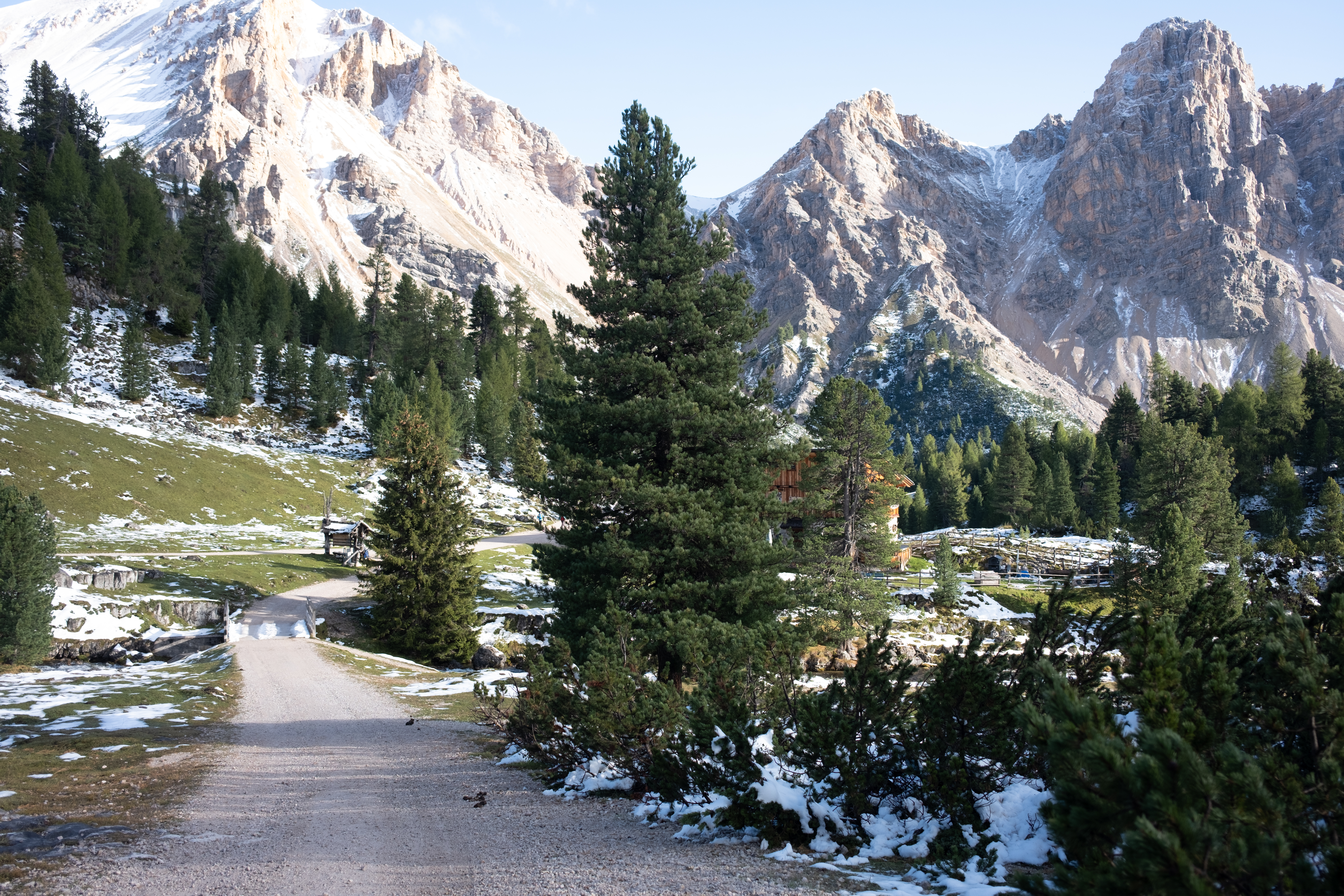
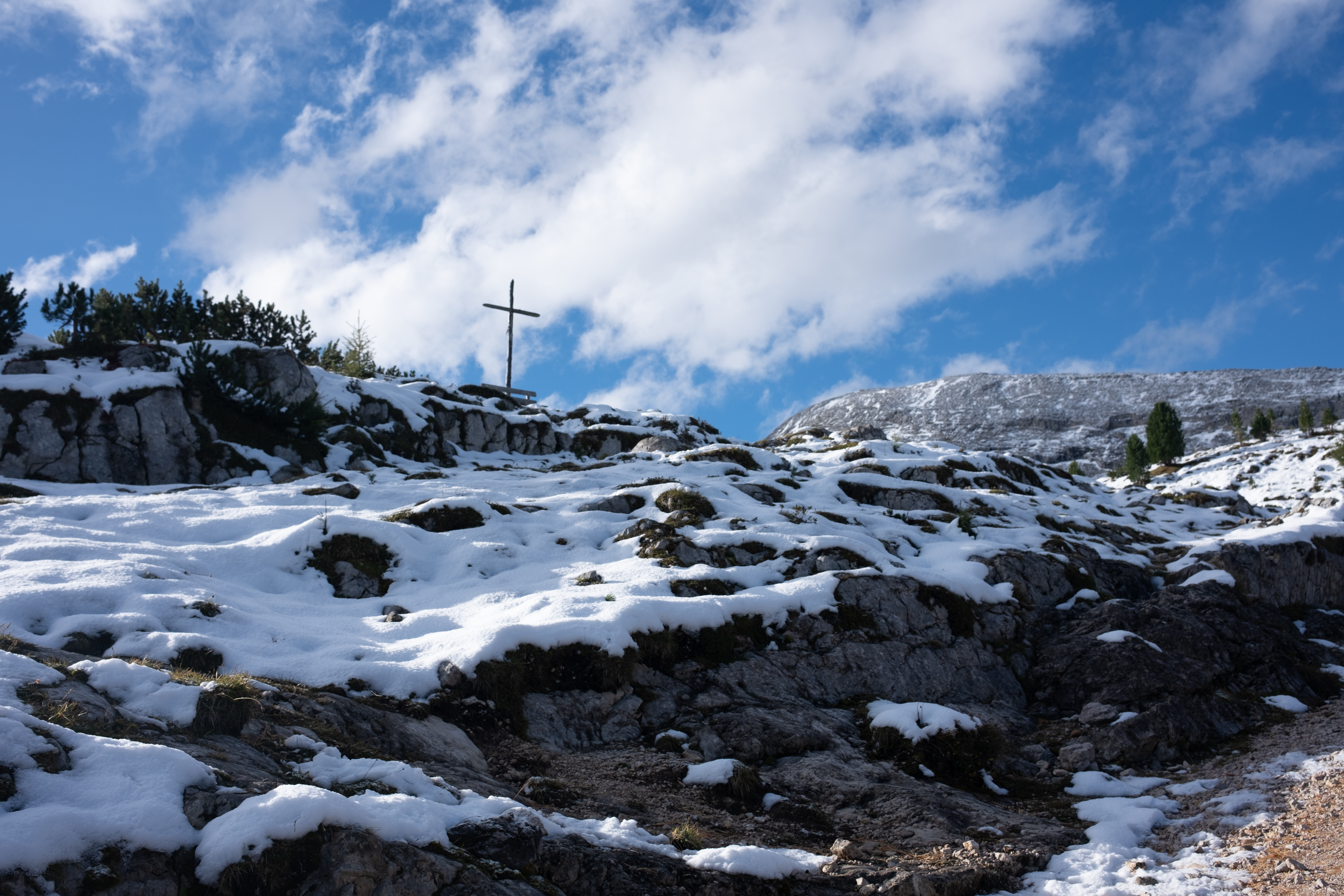 Just as I was heading out to meet Karen and the others, I ran into some familiar faces from Rifugio Biella—a group of Canadians. Rick, one of them, mentioned they were planning to complete the entire trail. It was comforting to hear, since most people I’d met were planning to stop after day 4 or 5. They’d be staying at Lagazuoi too, though they set off while I waited for my group.
Just as I was heading out to meet Karen and the others, I ran into some familiar faces from Rifugio Biella—a group of Canadians. Rick, one of them, mentioned they were planning to complete the entire trail. It was comforting to hear, since most people I’d met were planning to stop after day 4 or 5. They’d be staying at Lagazuoi too, though they set off while I waited for my group.
The morning felt magical. My legs found their rhythm, carrying me through exactly the kind of scenery that I signed up for when I decided to hike the Dolomites: peaks with jagged edges softened by spring meadows emerging from the melting snow. We even passed grazing cows and, surprisingly, llamas lounging in the valley. We decided to take a detour this time—my guidebook says that it would probably take us an extra 15 minutes—to avoid the regular path towards Forcella del Lago that would be dangerous because of the snow.
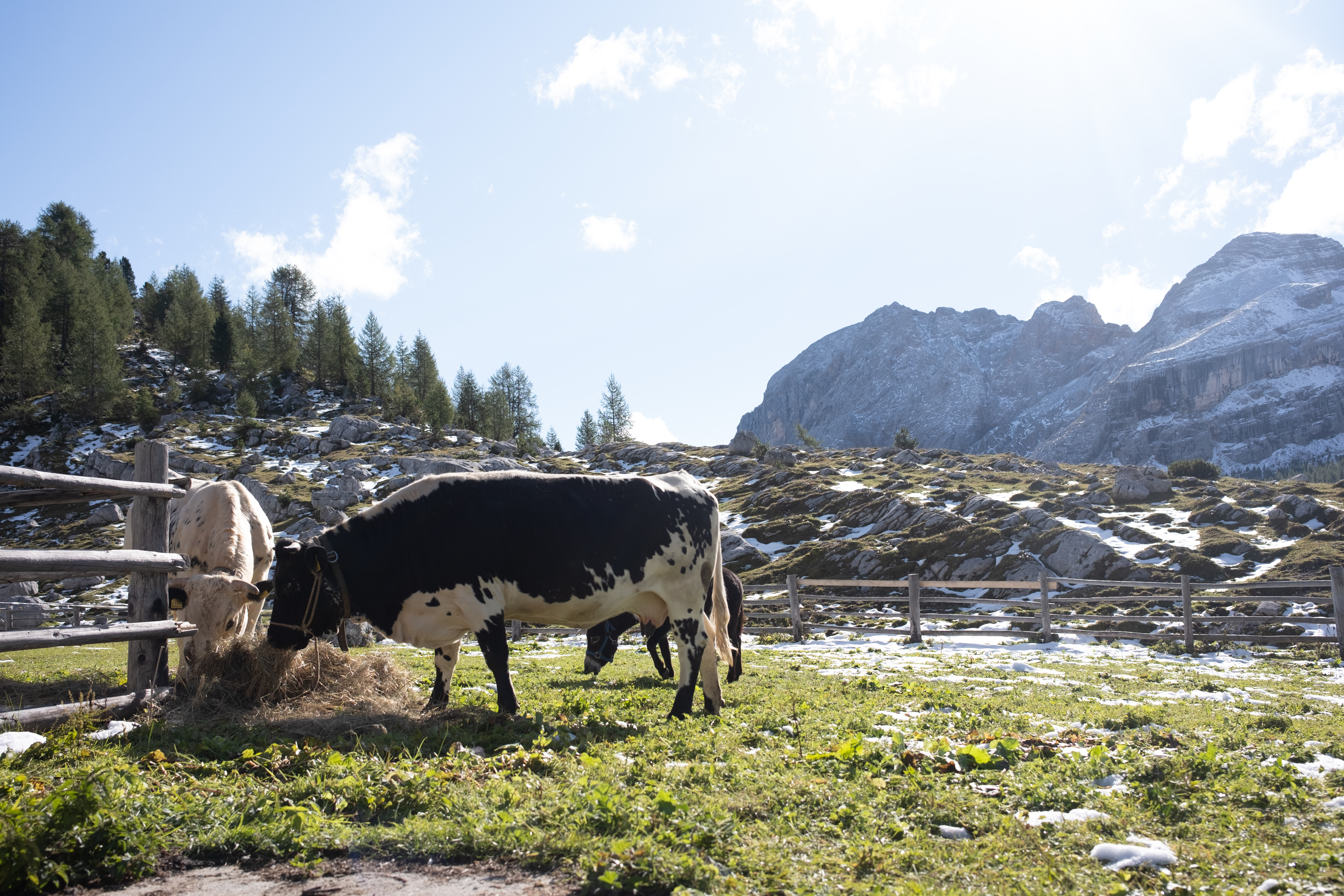
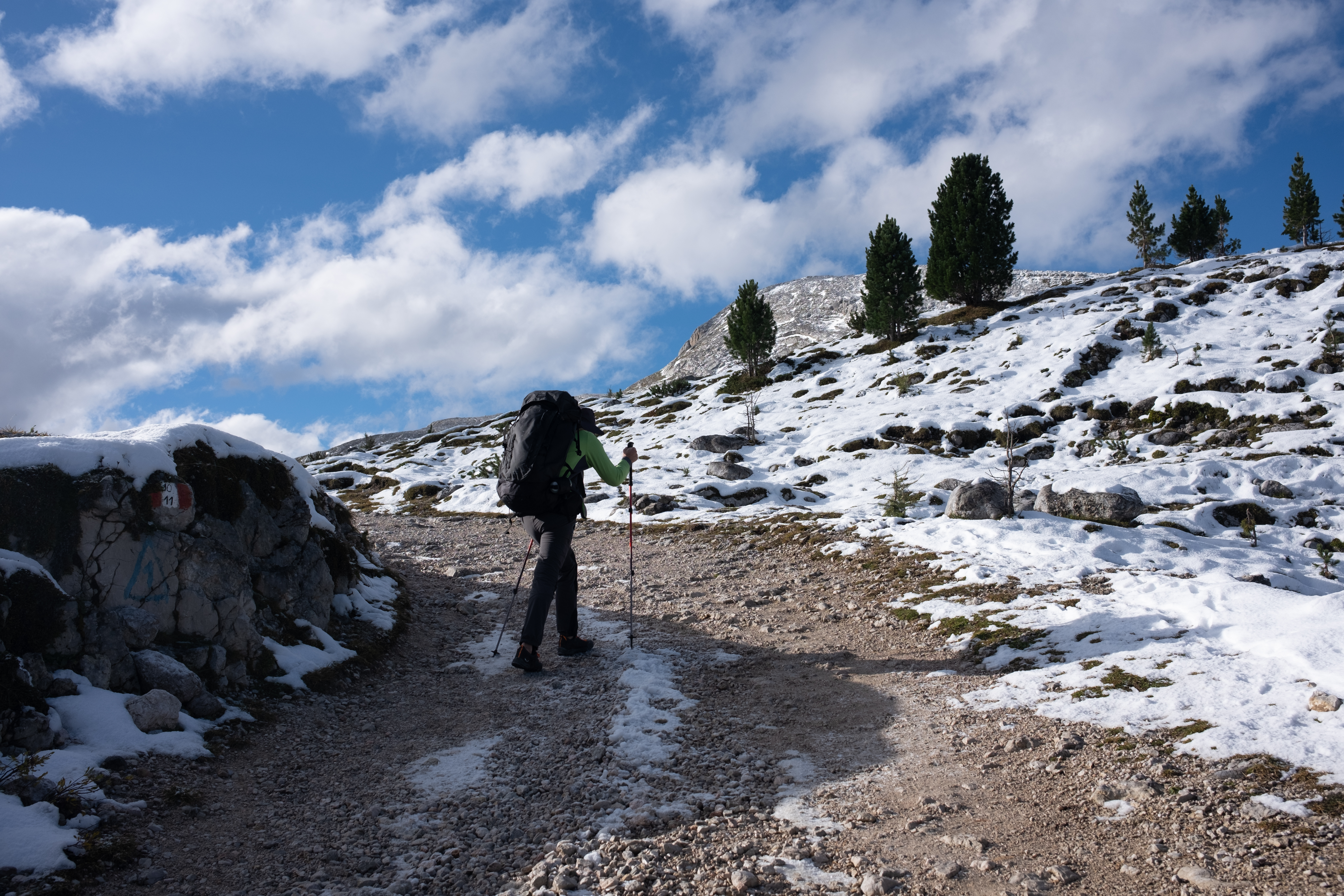
 Those “15 minutes” stretched quite a bit longer. The detour dropped us into another valley where we stopped for lunch at Capanna Alpina, then past Rifugio Scotoni with the llamas. After that came the real test—a relentless climb to Rifugio Lagazuoi. Francesco left us here, rushing ahead to catch the cable car where his dad would pick him up. We were all just together for two days, but it felt like we’d known each other longer. Watching him go, that familiar anxiety about solo hiking crept back in, especially knowing Karen and Juan Carlos would soon stop too.
Those “15 minutes” stretched quite a bit longer. The detour dropped us into another valley where we stopped for lunch at Capanna Alpina, then past Rifugio Scotoni with the llamas. After that came the real test—a relentless climb to Rifugio Lagazuoi. Francesco left us here, rushing ahead to catch the cable car where his dad would pick him up. We were all just together for two days, but it felt like we’d known each other longer. Watching him go, that familiar anxiety about solo hiking crept back in, especially knowing Karen and Juan Carlos would soon stop too.
But I still had another challenge ahead, which was to get to Rifugio Lagazuoi. It proved to be even more difficult than I thought it would be, and I wasn’t exactly sure why. Maybe it’s the altitude: Rifugio Lagazuoi would be my highest point of the trail. Juan Carlos and Karen hiked ahead of me, and I could feel my legs giving up so I decided to take it slow. My brain also refused to cooperate and would often lead me astray, even this one time I was led to a totally off-track icy trail and ended putting myself in a sketchy position that made me question all of my life choices.
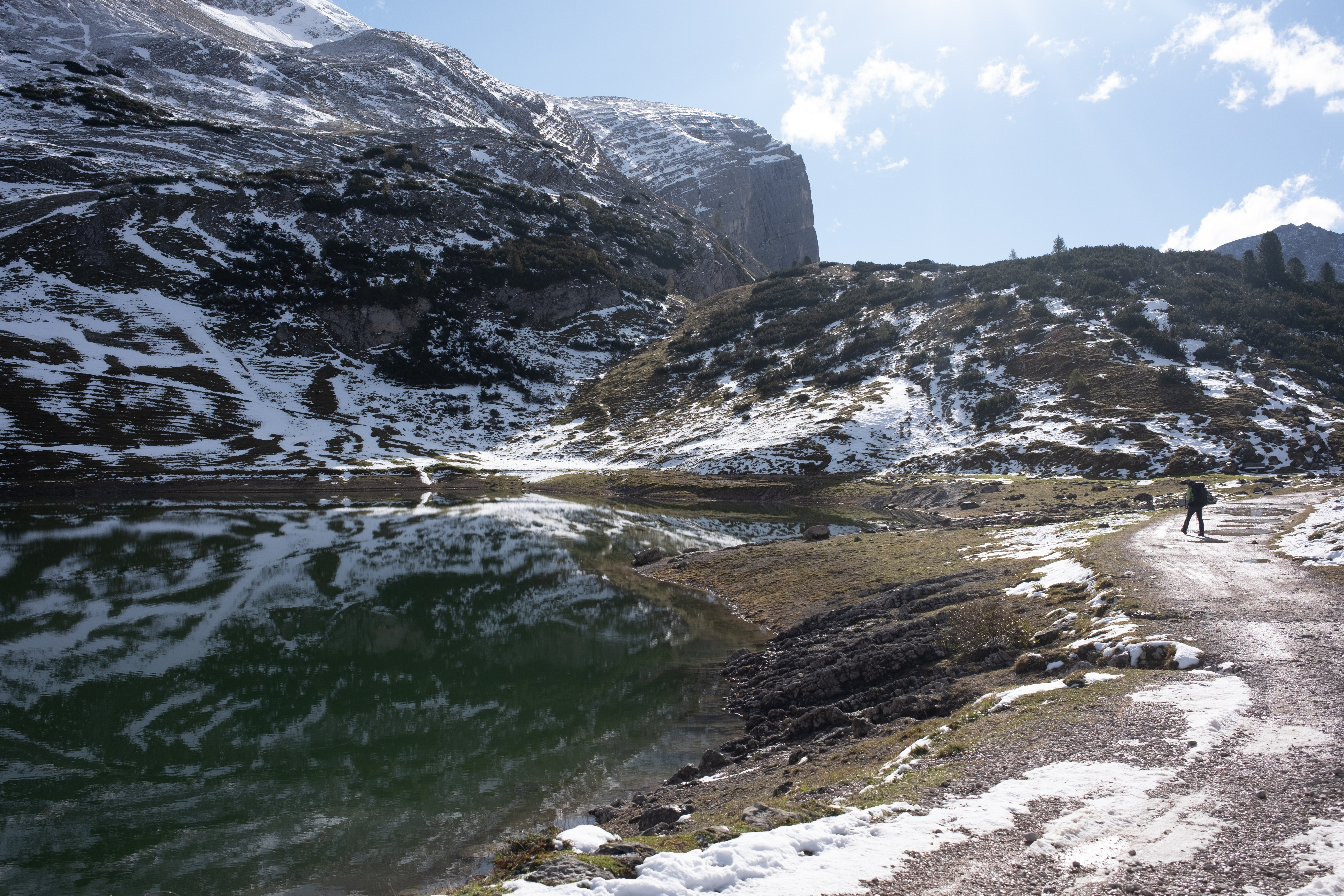
I’ve had days like this before—on the Camino, on the Fishermen’s Trail—where distance seems to stretch like rubber bands. At this point, I knew that I’d get to Lagazuoi at the end of the day, and I could see Lagazuoi in sight but it seemed so unreachable. There was still one final climb to do: a zigzag past World War bunkers, made trickier by snow, forced me to strap on my spikes again after nearly a whole day without them.
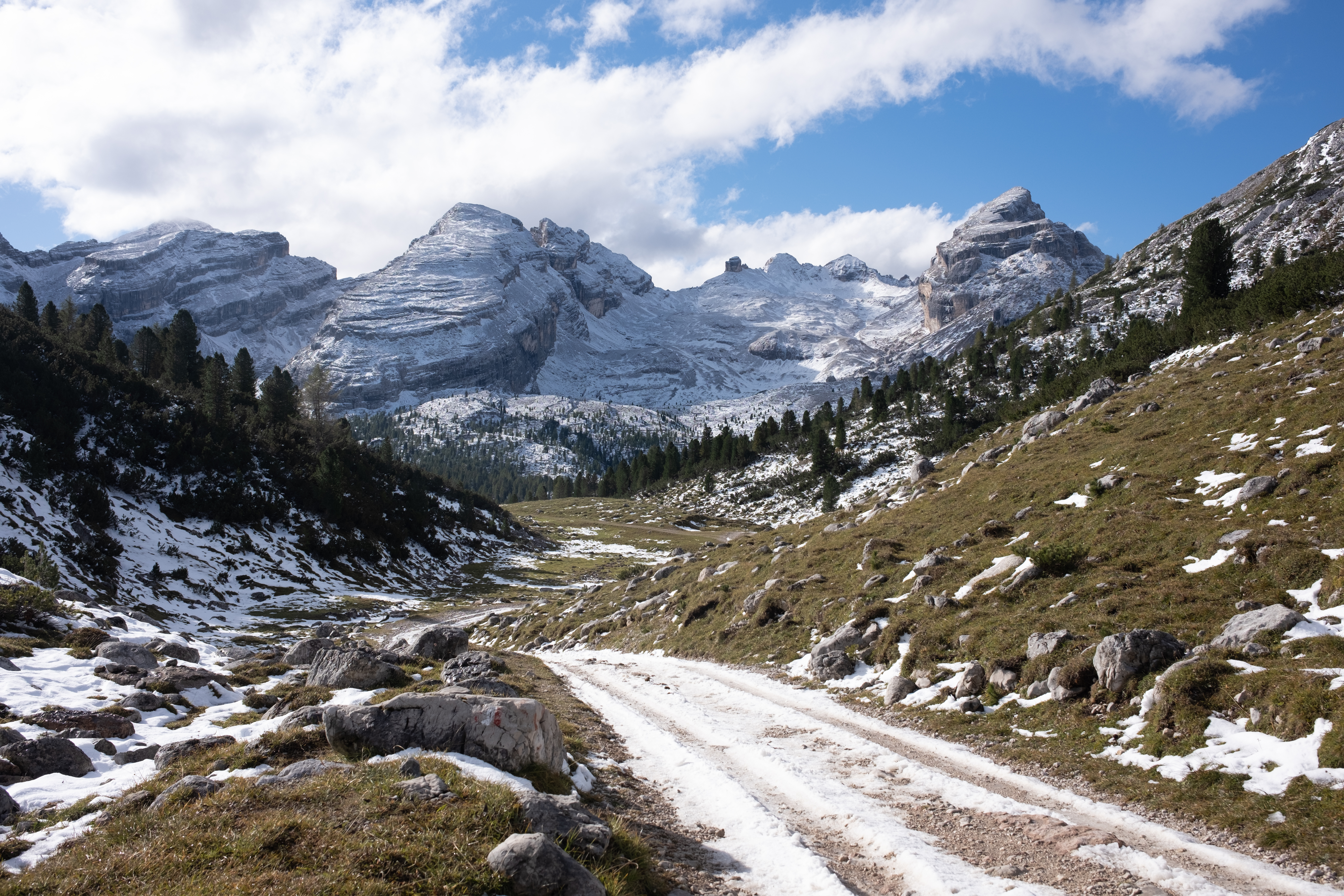


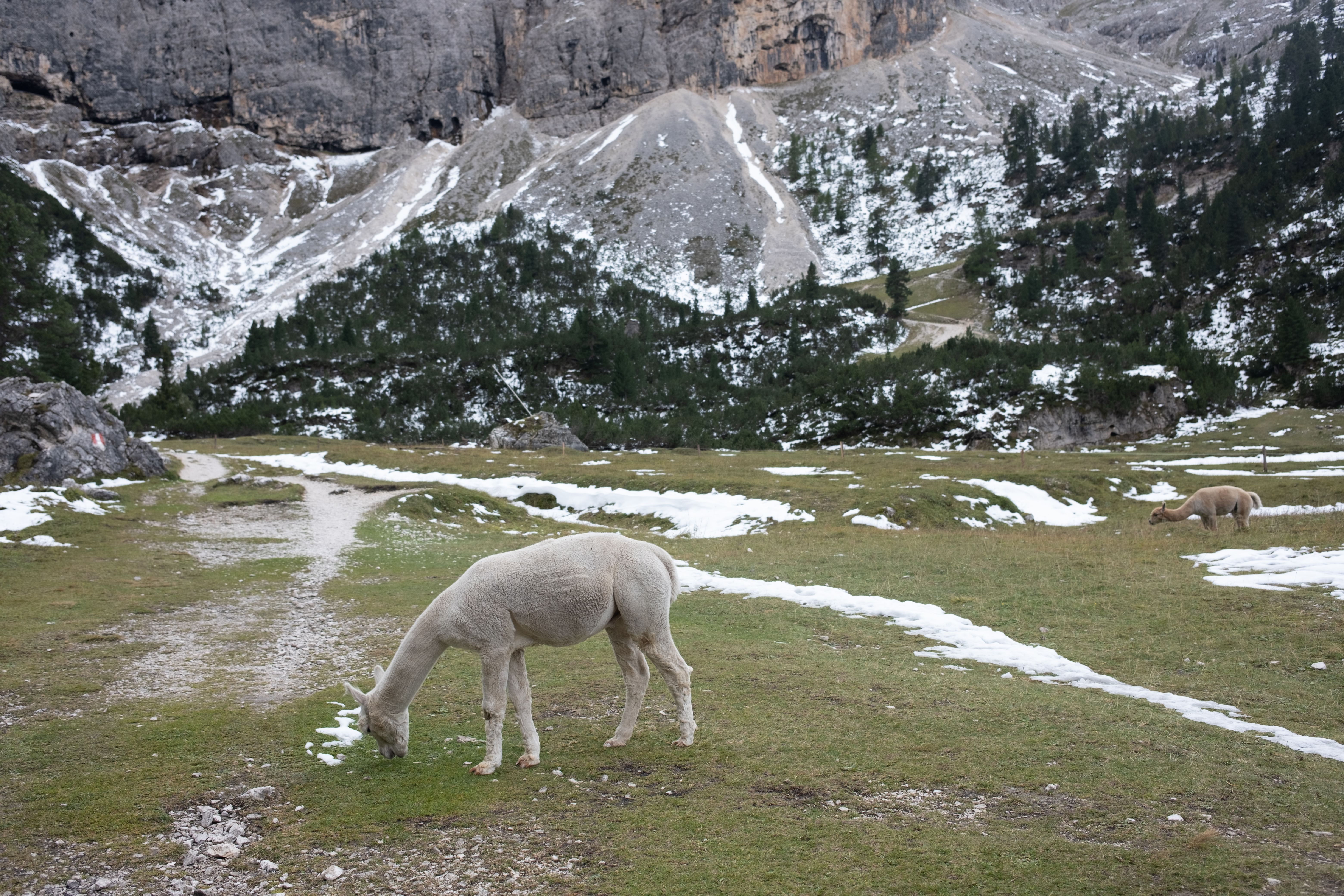 I made it at the end, and when I was on the very last path towards Lagazuoi, Rick was standing at the terrace overlooking the trail, and he encouraged me to keep going. “You’re almost there!” he said. His friends were behind me, also struggling, but at the end of the day we all made it, and I saw them again at dinner time. Karen and Juan Carlos were inside, and we also met our Australian friend again Paul. After a quick sketch outside (somehow I still found the energy to sketch), we all caught up over dinner and started planning for tomorrow’s trek and discussed all of our options: Route 442 through the forest to Nuvolau, the potentially icy war tunnels, or just taking the ski lift down.
I made it at the end, and when I was on the very last path towards Lagazuoi, Rick was standing at the terrace overlooking the trail, and he encouraged me to keep going. “You’re almost there!” he said. His friends were behind me, also struggling, but at the end of the day we all made it, and I saw them again at dinner time. Karen and Juan Carlos were inside, and we also met our Australian friend again Paul. After a quick sketch outside (somehow I still found the energy to sketch), we all caught up over dinner and started planning for tomorrow’s trek and discussed all of our options: Route 442 through the forest to Nuvolau, the potentially icy war tunnels, or just taking the ski lift down.

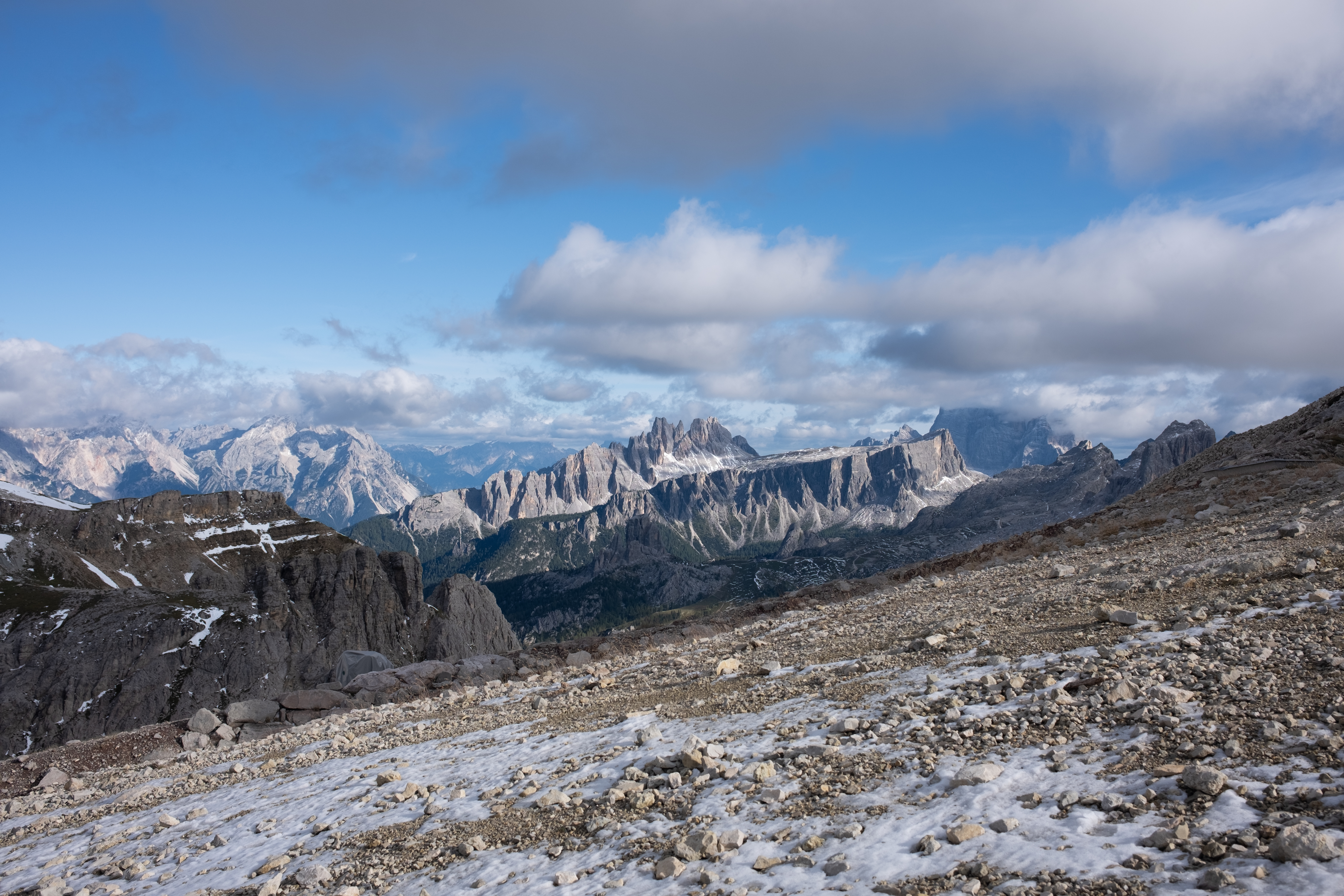
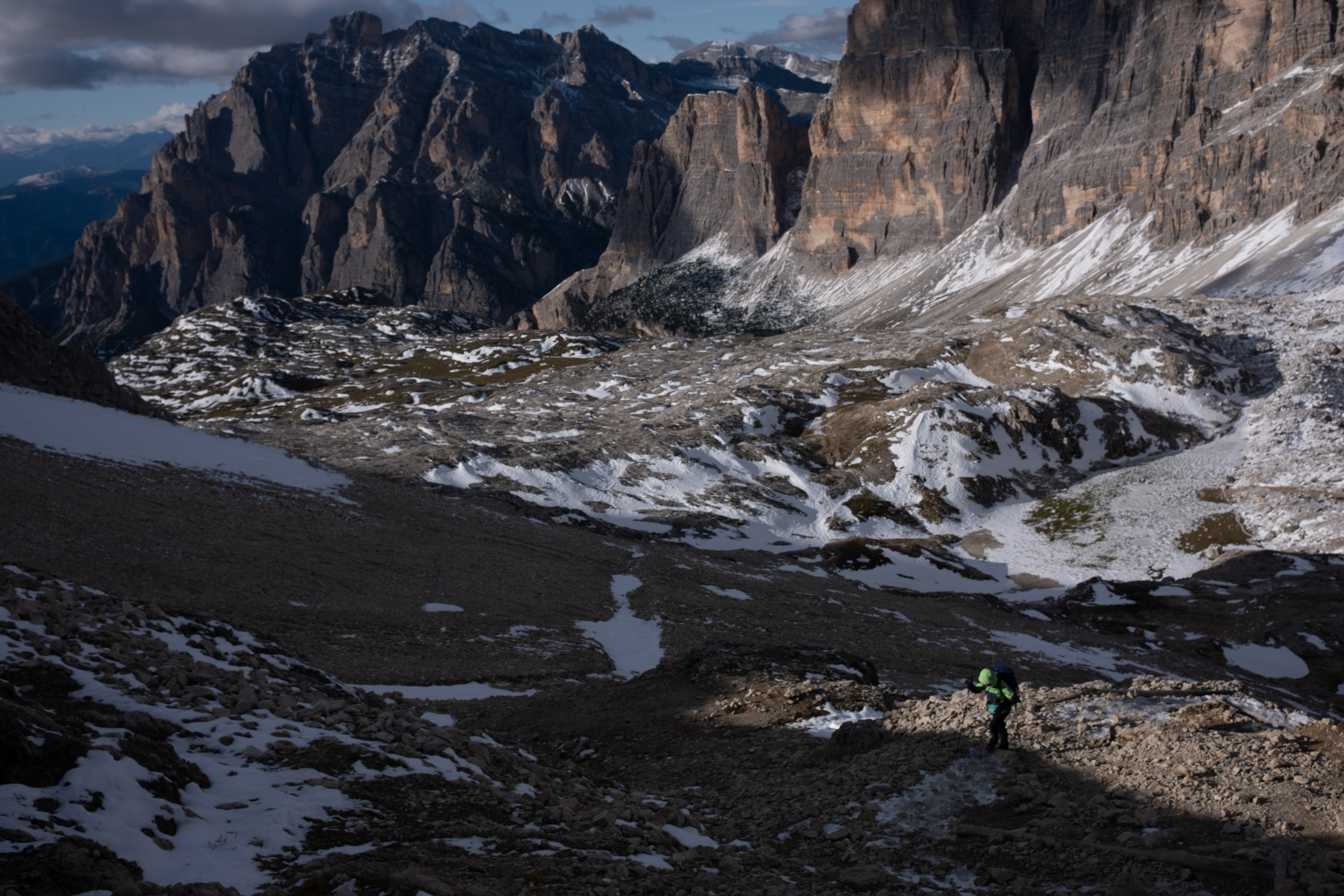
I left the decision for morning. Right now, my body wanted nothing but sleep, and my mind was trying to process the emotional rollercoaster of the past few days. As I drifted off, I thought to myself: after today’s brutal climb, did I have what it takes to make it to the end?
